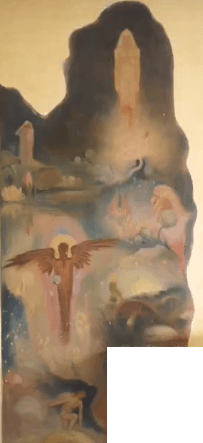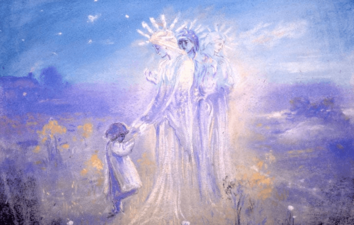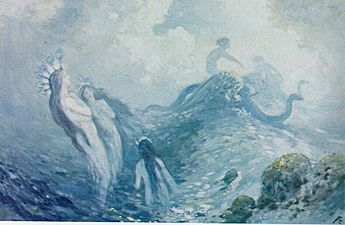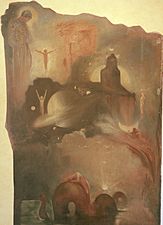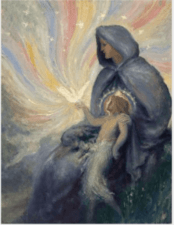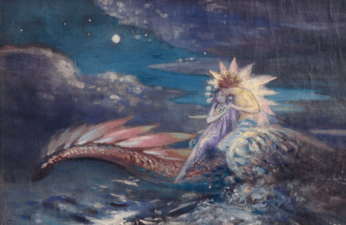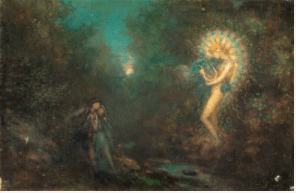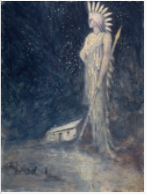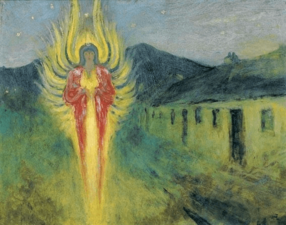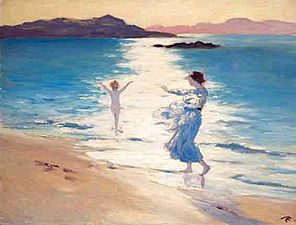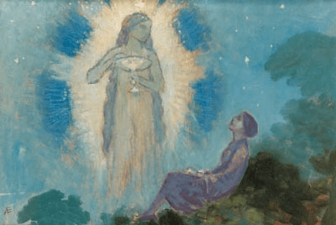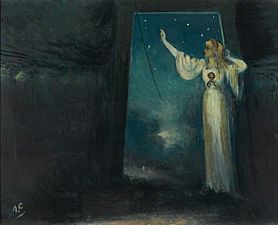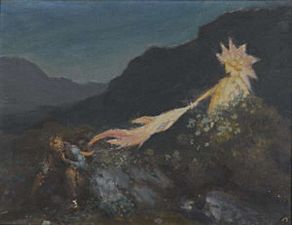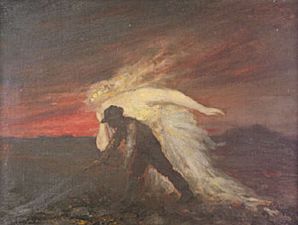George William Russell facts for kids
Quick facts for kids
George William Russell
|
|
|---|---|
 |
|
| Born | 10 April 1867 Lurgan, County Armagh, Ireland
|
| Died | 17 July 1935 (aged 68) Bournemouth, England, UK
|
| Nationality | Irish |
| Other names | Æ, AE, A.E. |
| Education | Rvd. Edward Power's school, 3 Harrington Street, Dublin |
| Alma mater | Metropolitan School of Art |
| Occupation | Author, poet, book editor, critic, painter |
| Known for | Poetry, painting |
George William Russell (born April 10, 1867 – died July 17, 1935) was a famous Irish writer, editor, and painter. He used the pen name Æ (often written AE or A.E.). He was also interested in mysticism, which is about spiritual ideas and hidden meanings. Russell was an important person in a group in Dublin who studied theosophy, a belief system about wisdom and truth. He was also an Irish nationalist, meaning he supported Ireland's independence.
Contents
Early Life and Education
George William Russell was born in Lurgan, County Armagh, in Ireland. He was the second son of Thomas and Mary Russell. When he was eleven, his family moved to Dublin.
He went to Rathmines School and the Metropolitan School of Art. There, he became good friends with another famous writer, W. B. Yeats. Russell also lived at the Theosophical Society lodge in Dublin for some time.
Russell first worked as a clerk in a shop. Later, he worked for the Irish Agricultural Organisation Society (IAOS). This group helped farmers work together. In 1897, Yeats suggested Russell for a job at the IAOS. Russell then became an Assistant Secretary there.
Family Life
In 1898, George Russell married Violet North. They had two sons who lived, Brian and Diarmuid. Russell's friends said he was a very kind and generous person.
Working for Ireland
Russell was very good at his job with the IAOS. He traveled all over Ireland, talking about how farmers could work together. He helped set up many co-operative banks in the south and west of the country. By 1910, there were 234 such banks.
Even though he worked for the IAOS, Russell was an Irish nationalist. He believed Ireland should be independent. During the 1913 Dublin Lock-out, he wrote a letter to a newspaper. He criticized how employers treated workers. This helped to end the difficult situation.
Russell supported the Easter Rising of 1916. This was a rebellion for Irish independence. However, he believed in peace. So, he helped by writing and editing, rather than fighting.
He also took part in the 1917–18 Irish Convention. Here, he disagreed with some ideas about Ireland's self-governance. Later, he joined the Irish Dominion League. This group worked against dividing Ireland.
Editor and Writer
From 1905 to 1923, Russell was the editor of the Irish Homestead. This was a newspaper for the IAOS. His writing skills helped spread the idea of farmers working together.
Then, he became the editor of The Irish Statesman from 1923 to 1930. This newspaper was for the Irish Dominion League. After this, he didn't have a job for a while. But his friends helped him by raising money. This allowed him to visit the United States. His books became very popular there.
Russell used the pen name "AE" or "Æ". This name came from an older word, Æon. It meant a person's lifelong search for meaning.
Artist and Supporter of Others
Russell's first book of poems was called Homeward: Songs by the Way (1894). This made him famous in the Irish Literary Revival. He met many other writers, including James Joyce and William Butler Yeats.
He also designed the famous Starry Plough flag. This flag was used by the Irish Citizen Army in 1914. It was flown during the Easter Rising.
Russell's home in Dublin became a popular meeting place. Writers and artists would gather there on Sunday evenings. They talked about Ireland's future in art and farming. Michael Collins, a leader of the new Irish government, also met Russell. They respected each other a lot.
Russell was known for his kindness. He helped many younger writers. Frank O'Connor called him "the father to three generations of Irish writers." P. L. Travers, who wrote the Mary Poppins books, also thanked Russell for his help.
Russell had many interests. He was a theosophist and wrote about politics and money. He also kept painting and writing poetry. He said he could see spiritual beings. He drew and painted these beings, like the sídhe (fairy folk) from Irish folklore.
Visions and Beliefs
George Russell said he had visions since he was young. These visions became stronger when he was 17. He and his friend Yeats were interested in Theosophy. Russell joined the Theosophical Society in Dublin in 1890.
He believed his visions came from different sources. Sometimes he thought they were from past lives. Other times, he believed they were symbolic dreams or even telepathy. He claimed to see nature spirits and painted them. He even said a Druid appeared to him and Yeats in a vision once.
Russell wrote a book called The Candle of Vision. In it, he shared his personal spiritual experiences. He also wrote about Celtic ideas of how the world began.
Later Life and Passing
Russell moved to England in 1932 after his wife passed away. He was not happy with how things were going in the Irish Free State. Even though he was not well, he went on a last trip to speak in the United States.
He passed away from cancer in Bournemouth in 1935. His body was brought back to Ireland and buried in Mount Jerome Cemetery, Dublin.
Gallery of Russell's paintings
Poetry Books

- Homeward Songs by the Way (1894)
- The Earth Breath and Other Poems (1896)
- The Nuts of Knowledge (1903)
- The Divine Vision and Other Poems (1904)
- By Still Waters (1906)
- Deirdre (1907)
- Collected Poems (1913)
- Gods of War, with Other Poems (1915)
- Imaginations and Reveries (1915)
- Candle of Vision: Autobiography of a Mystic (1918)
- Voices of the Stones (1925)
- Midsummer Eve (1928)
- Enchantment and Other Poems (1930)
- Vale and Other Poems (1931)
- Song and Its Fountains (1932)
- Verses for Friends (1932)
- The House of Titans and Other Poems (1934)
- Selected Poems (1935)
Novels
- The Interpreters (1922)
- The Avatars (1933)
Essays
- AE in the Irish Theosophist (1892–97)
- The Hero In Man (1910)
- The Renewal of Youth (1911)
- Ideals of the New Rural Society (1911)
- Co-operation and Nationality: A guide for rural reformers from this to the next generation (1914)
- The National Being: Some Thoughts on an Irish Polity (1916)
- The Candle of Vision (1918)
- The Inner and the Outer Ireland (1921)
- Song and Its Fountains (1932)
- The Living Torch (1937)
See also
 In Spanish: George William Russell para niños
In Spanish: George William Russell para niños




